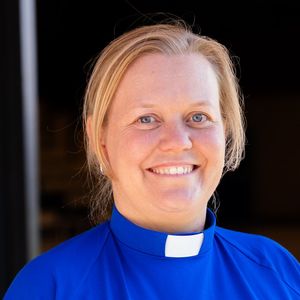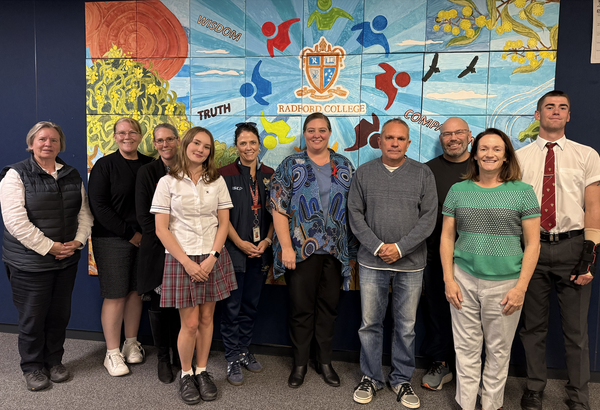Bridging Now to Next
By Reverend Dr Katherine Rainger, Senior Chaplain

On the morning of 28 May 2000, my best friend and I caught a train from Wollongong to Sydney. We were both university students who had caught wind of the Walk for Reconciliation across Sydney Harbour Bridge. My parents caught the train up from Goulburn and we met at Central Station.
Some of the details of the day are a bit hazy 25 years later. There was one moment, however, that I will never forget. My best friend, parents and I were on the train crossing the bridge so that we could start the walk. The train carriage was full. Through the window, we could see thousands of people already walking, filling the eight lanes of the bridge. There were people everywhere we looked.
In our train carriage, a group of Aboriginal women began to sing in their language. The sound of the women’s song, combined with the sight of all those people on the bridge united for justice, was deeply moving. In that train carriage, 19-year-old me witnessed another way of being human together.
More than 250,000 people walked across the Harbour Bridge that day. A week later, about 60,000 people walked together across the William Jolly Bridge in Brisbane. Scores of smaller walks followed throughout the country, in state capitals and regional towns, culminating in large marches in Melbourne and Perth at the end of the year. The Melbourne walk, starting at Flinders Street Station and finishing at King’s Domain Gardens, drew as many as 300,000 people.
Ngunnawal Elder Aunty Violet Sheridan was one of the many people who walked across the Harbour Bridge on 28 May 2000.
“I was in the middle, carrying my little Aboriginal flag and there were all these people in front of me. I looked back and saw waves and waves and waves of people coming behind me. And I started to cry, because it made me so happy that black and white were coming together and walking into the future for Reconciliation …We have had horrific things done to us, but it’s not about blaming this generation … Reconciliation to me means acknowledging that Australia has a past. Unless we do that, we can’t go forward … We mightn’t change old heads, but we can change the future, and the children are our future.”
The walks were a testament that Australians wanted to face the truth of the Stolen Generations and provide avenues for healing. The word "Sorry" was written in the sky that day. Eight years later, Prime Minister Kevin Rudd formally apologised to the Stolen Generations.
This year's National Reconciliation Week theme is Bridging Now to Next. The theme asks us to reflect on the gains made in Reconciliation and to ask ourselves where there is more to be achieved.
As a community at Radford, we are looking at where to next through a Reconciliation Action Plan. I wonder where you might go next in your Reconciliation journey? You could:
- Reflect on prayers written by Aboriginal and Torres Strait Islander Christian leaders.
- Attend Reconciliation Day in Commonwealth Park on Monday, 2 June from 10.00 am – 3.00 pm. A brilliant program is on offer.
- Listen to Wiradjuri musician Uncle Johnny Huckle’s song Fair and Black - a compelling reflection of the Harbour Bridge Walk in 2000.
- Read an article by Julie Tongs, CEO of the Winnunga Nimmityjah Aboriginal Health and Community Services, about the criminal justice system in the ACT.
- Look at the Narragunawali framework to learn more about Reconciliation Action Plans in education.
- Take your own action.
